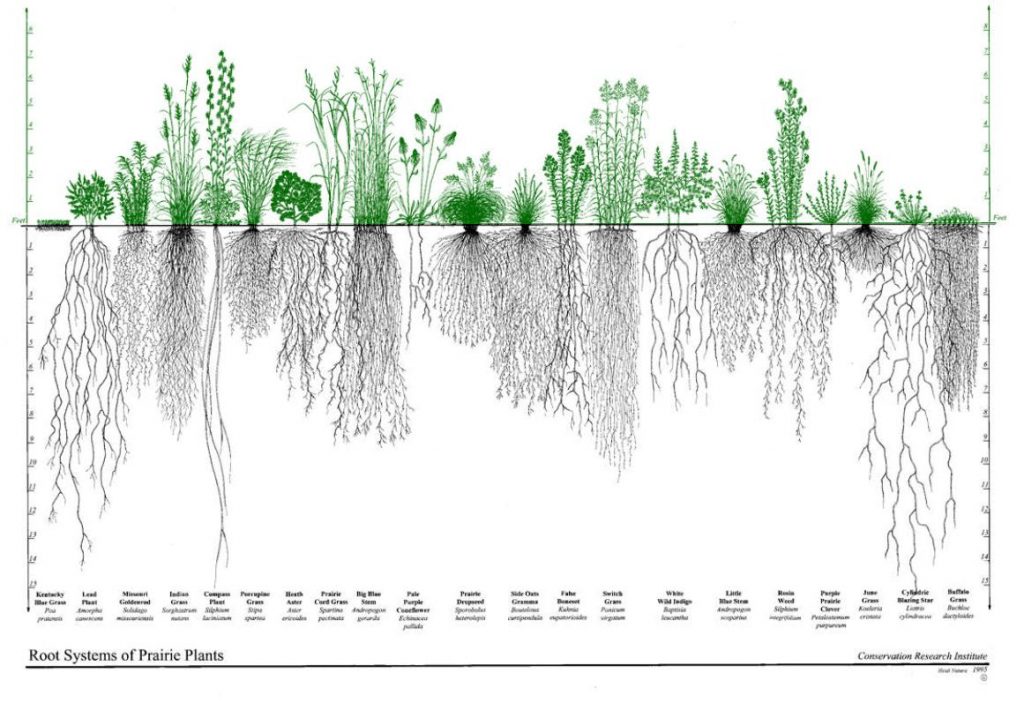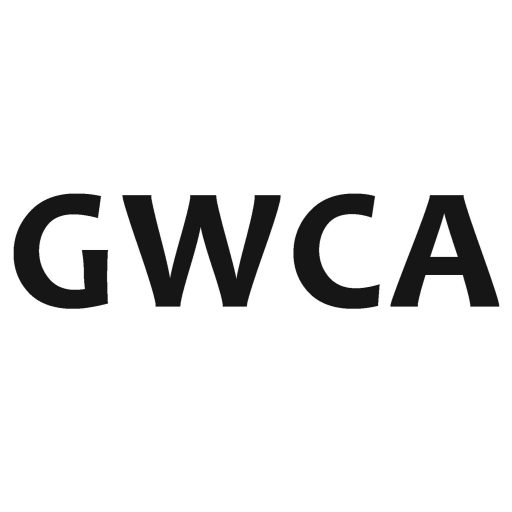Stormwater runoff in the neighborhood

The alarming photograph above at Greenview and Belle Plain is a reminder of how important solutions to stormwater runoff are to the neighborhood. While rare, the frequency of local extreme weather events may be increasing as a result of climate change. These events result in neighborhood flooding as a result of the runoff from impermeable surfaces.
Any time the water accumulates faster than it can be absorbed by the ground it runs into sidewalks, streets and alleys where it runs down-gradient (downhill) until it reaches a sewer. If the sewer system accumulates faster than it can be removed into the larger sewer conveyance system, the sewer backs up and we end up with flooded streets.
The good news is that GWCA and the greater community are combating the issue with many initiatives described below. If you would like to lend your expertise or passion for stormwater solutions, please reach out to info@gracelandwest.org.
Capture it where it falls
GWCA, along with leaders of 12 adjacent neighborhood associations, are asking property owners of homes, condos, apartment buildings, schools and businesses to add 100 S/F more of permeable hardscape or native plant landscape for every 3,000 s/f of property they own or manage. There are many ways to make this happen described below and in more detail on the Chicago Department of Water Management’s web site: Green Design.
Eliminate impermeable surfaces
Impermeable surfaces are those that allow water to run right off of them. Removing these surfaces could mean installing permeable pavers or permeable concrete in place of traditional pavers or walkways (eliminates over 18,000 gal/year if done on one block of sidewalk or a small parking lot) or taking down an unused shed or garage (eliminates over 6,000 gal/year) in favor of native grasses with deep root systems (see below).
Install green roofs
Green Roofs are options for many flat roofs on neighborhood homes, apartment buildings, condos, schools, garages and businesses. They prevent water from running off the roof into the storm drain and into the sewer. In addition to absorbing stormwater, plantings beautify the neighborhood, reduce heat island effect and provide bird, bee, butterfly, and beneficial insect habitats. The Rizal Community Center proceeded with the installation of a panel from LiveRoof after GWCA hosted them for a discussion in 2018.
Install a rain garden, install a bioswale or use rain barrels
The elimination of impermeable surfaces or installation of a green roof are substantial projects. The good news is that there are very small actions that collectively put a big dent in stormwater runoff. One of those is the installation of a rain garden or bioswale and the use of rain barrels. Routing storm drains to a rain garden that absorbs the runoff from your roof can have a large impact. Some great information on Rain Gardens for Illinois can be found here, from the Prairie Rivers Network.
Plant native grasses with deep root systems…
…or better yet, plant a giant oak that can lower the remove 40,000 gallons of water a year. Ok, the stand of mature giant oaks might take some time (see the Tree Canopy page of our website), but you can make a difference. Deep root, native grasses slow the pace of runoff dramatically when compared to turf-grass that sits in a compacted soil.

GWCA Initiatives
Bioswales
The Berteau Greenway is a bioswale. It’s native plant’s roots don’t reach far into the ground, but they act to slow the flow of water into sewers.
WEF – Bioswale Parkway Designs for North Greenview An alternate plan for bioswale engineering on Greenview was offered by WEF, but the clock ran out for a decision for the 2017 Service Project awardee and the project went elsewhere in Chicago. The design concepts for those bioswales are excellent and should be looked at for Greenview, Belle Plaine and Southport, as the design is exceptionally well suited for urban flooding reduction needed here and elsewhere in the 47th Ward and City.
Center for Neighborhood Technology (CNT) “Rain Ready” Initiative
The Center for Neighborhood Technology (CNT) developed a custom “Rain Ready” survey (2015) to help the Graceland West neighborhood better identify and troubleshoot neighborhood stormwater run-off and flooding issues including intersection, basement and vehicle flooding. Results from the survey, answered by 31 residents, can be found here.
CNT encouraged the use of permeable concrete for Greenview sidewalks from Irving Park to Belle Plaine and for all new or replaced parking pads.
CNT, The Prevalence And Cost Of Urban Flooding, a Case Study of Cook County, IL. https://www.cnt.org/publications/the-prevalence-and-cost-of-urban-flooding
Leaf Cleanup
Greenview intersection and street leaf cleanup began in 2012 and expanded to all streets in 2016. GWCA Council Members and Block Reps lead this and GWCA and Lake View High School partner on this effort. The Leaf Cleanup event helps keep leaves and other debris out of sewers which is important to increase capacity, reduce blockage, and decrease the number of cleanouts required.
Stormwater absorption pollinator pathways
GWCA has increased pollinator habitats and increased stormwater absorption by installing native plant pollinator pathways on corners throughout the Graceland West neighborhood. The original demonstration corner was installed in 2016 at the SW Corner of Belle Plaine and Greenview. It is an example of what a home or condo owner can easily do to absorb about 2,000 gallons of annual stormwater. The native plants selected include habitat for the endangered rusty patched bumblebee, other pollinators, birds, bats and beneficial insects. There are now 7 installations and we plan to install more each Spring.
Soil was amended 9 to 12 inches deep (peat moss and compost were incorporated into existing clay and sandy soil) for maximum permeability. As noted above, GWCA is encouraging all neighbors to add another 100 sq. ft. of permeable space (for a typical 25′ x 125′ city lot) to capture stormwater where it falls to help prevent stormwater runoff, standing water (which can attract mosquitos) and vehicle, street and basement flooding.
Additional Links:
In addition to neighborhood partners, we have partnered and worked with:
- Center for Neighborhood Technology (CNT): (Prior) Harriet Festing, Director, “Rain Ready”and Water Program and Burrell Poe, “Rain Ready” Outreach Coordinator. (Current) Rebecca Raines, “Rain Ready” Outreach Coordinator (rraines@cnt.org, 773.269.2217)
- Water Environment Federation (WEF); Anthony D Giovannone, whose Co-chair was Chris Marschinke and the Metropolitan Water Reclamation District of Greater Chicago (MWRD).
- Open Lands. Joel McFarland with GWCA leads the Open Lands Tree Grant Project for GWCA.
- LiveRoof.
- Chicago Center for Green Technology (through 2014)
- 47th Ward Aldermen and staffs. And our ECO Green Committee Leadership is active on the 47th Ward Green Committee.

